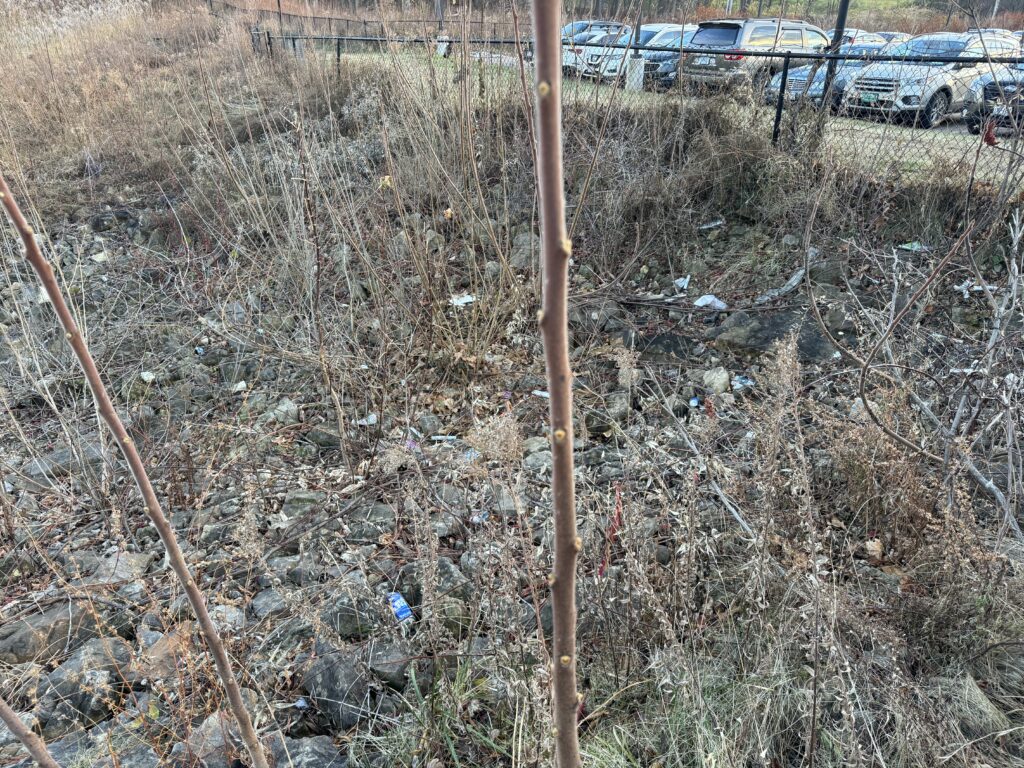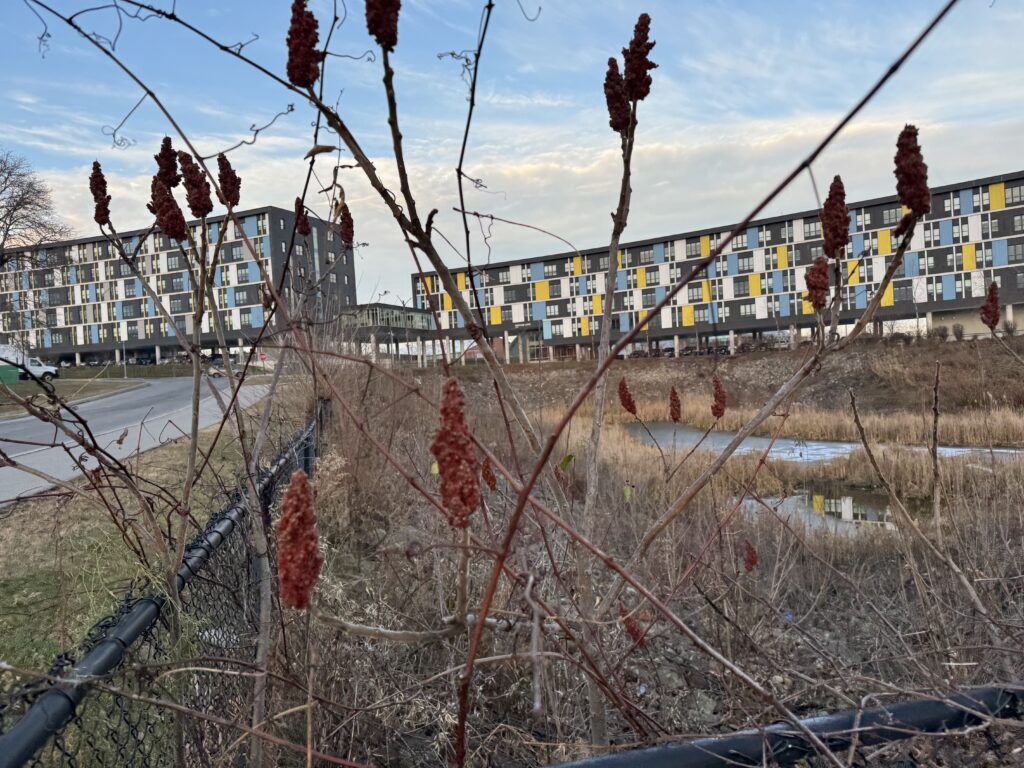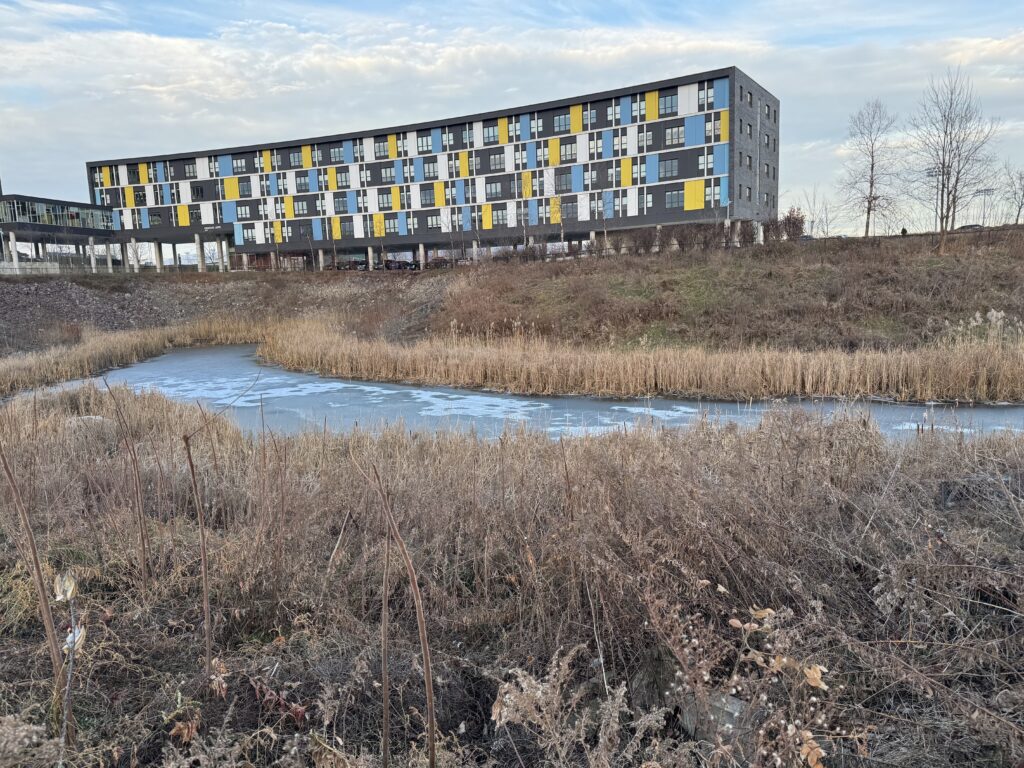Today I took my my final visit (???) to the stormwater pond on UVM’s Redstone Campus. On this walk around the pond, I noticed that almost all of the foliage that was once there is now gone. The mulberries and sumacs have both lost all of their leaves, and have reduced themselves to sticks and buds. The mulberries and sumacs are photographed below.


Besides the dried grass stems that are still standing, the only foliage left is the slowly dying plants in the understory, that you can just make out a little bit of green that signals that the plant is there. These plants are likely already on their way out, as the temperatures are only going to get colder from here on out.
Speaking of cold temperatures, the pond is almost entirely frozen over. The only possible explanation I have for this is that runoff from road salt has washed into the pond, which has then lowered its freezing point.

Signs of animal life are pretty sparse in the area of the pond, but that isn’t entirely a new thing; I saw a squirrel foraging in the underbrush, and a few birds in the trees overhead, but besides this all life is vacant. The life that is particularly vacant at this point would be invertebrate life. Likely due to the fact that many insects die or overwinter in the soil, all insects and other bugs seem to have completely vanished. This makes the pond appear very quiet, as there are no critters bouncing around in the leaves, or any chirps of crickets.
Final Thoughts
The pond has changed quite a bit since I’ve arrived, but I don’t think I would have noticed if I had not kept a watchful eye. I feel as if the changes that come with autumn are looked at on a landscape scale instead of an observation of a singular spot. When singular areas are looked at, areas like this pond are often overshadowed by the extravagant displays of color in the trees. I read a book once that says something along the lines of “a good explorer looks down when he feels like he should be looking up, because that way, he will see something he would have never seen before.” I feel like this philosophy definitely applied for this project, and it helped me to take my attention away from the beautiful fall colors and focus on an area that had its own, subtler beauty. While the pond seemed mundane at first, closer inspection and learning showed just how wonderfully nature and humans can work together. From seeing the different zones where plants thrived to learning about how much ponds like this do for the environment, I believe that taking part in this phenology project increased my understanding and appreciation for the mundane.
One last thought
As I took once last walk around the pond, I noticed how much trash that had built up in the understory. I only noticed this on this final trip, probably because the trash had previously been covered by foliage. While seeing trash infiltrating the natural landscape is upsetting, it got my brain thinking: People (including myself) walk by this pond every day without thinking about what it does for us. Collecting trash, slowing water, and filtering pollutants all help the health of our ecosystems, and therefor our healths, all all functions that this humble pond uses to protect us. I think it is poetic in a sense, that something so important to our lives is something we would never normally bat an eye at. While I probably won’t look at the pond with the same level of detail every again, I now have a brand new appreciation for it, and drainage ponds like it, that I will carry with me for the rest of my life.
Keep looking at ponds!
-Alex